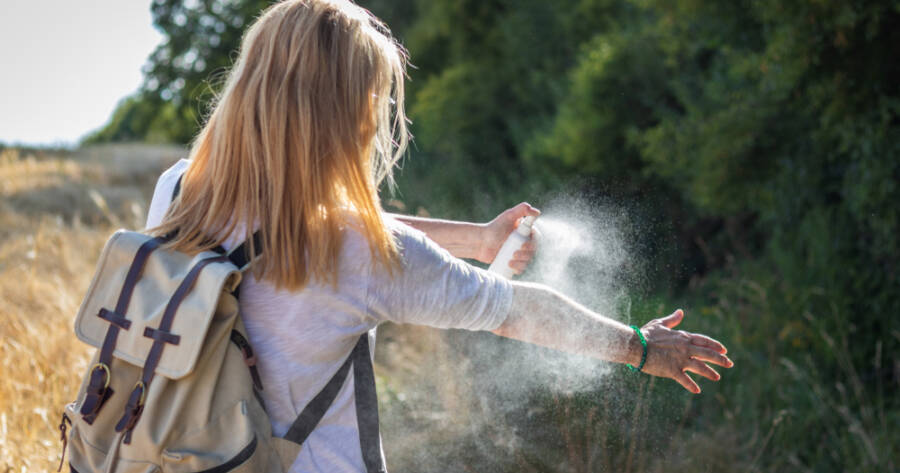Bug bites are an inevitable part of spending time outdoors, especially as temperatures rise and insects become more active. While many bites are mild annoyances that heal quickly, others can lead to allergic reactions, infections, or even transmit serious illnesses. Being able to recognize different types of bites and understanding how to respond can make a big difference in how quickly you recover. With the right knowledge and preparation, you can stay safe, comfortable, and confident wherever you go.
1. Mosquito Bites
What they look like: Small, raised, red bumps that are itchy and appear shortly after being bitten. Some people may develop welts or a larger allergic reaction.
Where you might get them: Mosquitoes are found in grassy or wooded areas, especially near standing water.
Treatment:
- Wash the area with soap and water.
- Apply a cold compress to reduce swelling.
- Use over-the-counter anti-itch creams or oral antihistamines to manage itching.
- Avoid scratching to prevent infection.
Prevention tip: Use insect repellent containing DEET or picaridin and wear long sleeves when outside in mosquito-prone areas.
2. Tick Bites
What they look like: A small red bump, sometimes with a dark spot in the center (where the tick attached). A “bullseye” rash may develop with Lyme disease.
Where you might get them: Ticks are commonly found in wooded areas, tall grass, and leaf litter.
Treatment:
- Remove the tick promptly with fine-tipped tweezers, gripping as close to the skin as possible and pulling steadily upward.
- Wash the area with soap and water, and disinfect with alcohol.
- Monitor for symptoms like fever, fatigue, or a spreading rash over the next few weeks.
When to seek help: If a rash develops or flu-like symptoms appear, see a doctor. You may need antibiotics if the tick carried Lyme disease or other tick-borne illnesses.
3. Flea Bites
What they look like: Small red bumps, often in clusters or lines, with intense itching. Commonly found around the ankles or legs.
Where you might get them: Fleas can come from pets, carpets, or upholstered furniture.
Treatment:
- Wash bites with soap and water.
- Apply anti-itch creams or antihistamines.
- Treat your home and pets for fleas to prevent further bites.
4. Spider Bites
What they look like: Most spider bites are harmless and look like red, itchy bumps. However, bites from spiders like the black widow or brown recluse can cause more severe symptoms.
Where you might get them: Dark corners, woodpiles, basements, and garages.
Treatment:
- Clean the bite area with soap and water.
- Use a cold compress to reduce pain and swelling.
- Take over-the-counter pain relievers if needed.
When to seek help: If you experience muscle cramps, fever, nausea, or a spreading wound with a dark center, seek medical attention immediately.
5. Bedbug Bites
What they look like: Red, itchy welts, often in rows or clusters, usually on exposed skin like the arms, face, or neck.
Where you might get them: Hotels, homes, or any place with infested bedding or furniture.
Treatment:
- Wash with soap and water.
- Apply anti-itch cream or take antihistamines.
- Wash all bedding in hot water and treat your home for infestation.
6. Bee or Wasp Stings
What they look like: Red, swollen area with a white center, typically painful at first, and later itchy.
Where you might get them: Gardens, parks, or anywhere flowers or food are present outdoors.
Treatment:
- Remove the stinger if visible.
- Wash with soap and water.
- Apply a cold compress and take pain relievers or antihistamines.
When to seek help: If you have difficulty breathing, swelling of the face or throat, or dizziness, call 911 immediately—these are signs of a severe allergic reaction.
Know Your Bites, Stay Prepared
Knowing how to identify and treat common bug bites helps you respond quickly and avoid unnecessary discomfort or complications. Whether you’re dealing with a mosquito bite, tick attachment, or a sudden cluster of bedbug welts, early and proper care can ease symptoms and reduce the risk of infection. Keeping essential supplies like cold packs, antihistamines, and hydrocortisone cream on hand ensures you’re ready for anything during outdoor activities or travel.
Beyond treatment, prevention plays a key role in protecting your skin and overall health. Using insect repellent, wearing protective clothing, and checking your surroundings, especially after hikes or time in wooded areas, can significantly lower your chances of being bitten. And if a bite appears unusual, worsens, or triggers systemic symptoms, contacting a medical professional is always the safest choice. With mindful habits and awareness, you can fully enjoy the outdoors without worry.
